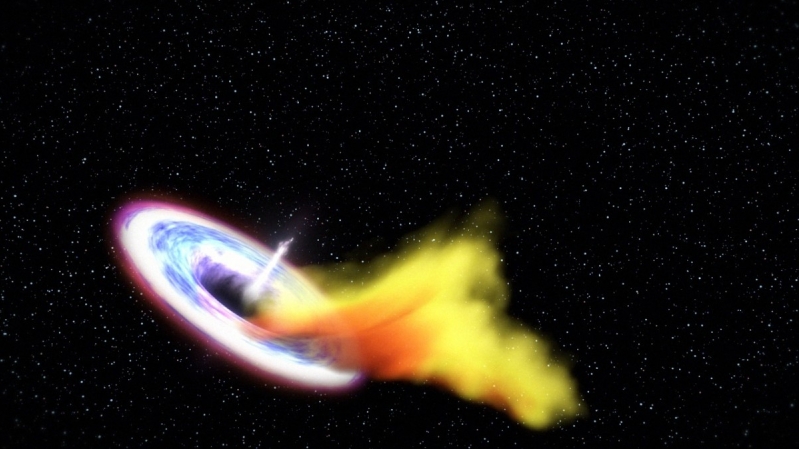
Using a powerful telescope, astronomers have found one of the nearest supermassive black holes to Earth that is currently undergoing powerful outbursts. The black hole apparently shows "burping" activities, which is instrumental on how universe was developed.
Scientists used NASA's Chandra X-ray telescope to locate two streams of cosmic activities at the core of NGC 5195, a galaxy 27 light years away. The galaxy is moving towards another galaxy called as NGC 5194, or simply known as "The Whirlpool."
According to Eric Schlegel, lead author of the study, the cosmic activity is the "best example of snowplowed material" they have seen so far. Schlegel, from University of Texas at San Antonio, presented his findings during the American Astronomical Society's winter meeting, which was held on Jan. 5.
The researchers believed that this galactic collision happened in the early phases of the universe. As the two galaxies draw closer to each, their cosmic materials get inside the black hole. The black hole also pushes the two galaxies to collide.
This monstrous object in the universe works like a vacuum. Anything that comes near the black hole's event horizon would eventually suck down to its core.
It also interesting to note that supermassive black hole's activity can shape a galaxy, a process called feedback, the researchers said. In the process, black holes can be responsible for how some stars form. "This shows that black holes can create, not just destroy," according to Marie Machacek, co-author of the study from Harvard-Smithsonian Center for Astrophysics, in Massachusetts
The latest findings are also interesting for science fans around the world, because the activity is happening up close, with less distortion. Some galaxy merges are happening at the far end of the universe that telescopes can't reach.
"Intermediate mass black holes are hard to find ... and it's hard to know where to look for them," astrophysicist Julie Comerford explained.
The research appears in the Nov. 10 issue of Astrophysical Journal.
According to Universe Today, the nearest black hole on Earth is named V4641 Sgr, and it located in the Sagittarius arm of the Milky Way. Scientists are trying to find out the nearest black hole from our planet for the safety of the humanity. This search is very important to know whether the Earth is in danger of passing near one.







